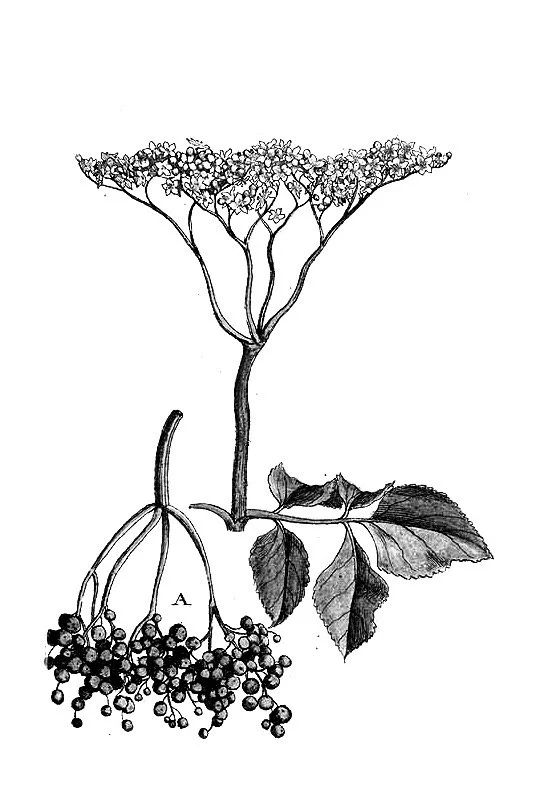Blue Elderberry
Blue Elderberry
BLUE ELDERBERRY SEEDS
Sambucus cerulea
Large shrubby tree native to western North America. Broad clusters of scentless creamy white flowers. The ripe blue fruits have a white bloom in dry weather and are suitable for jellies and wines. Beloved by diverse winged wildlife. Hardy to at least zone 5, but highly adapted to mountain and desert regions.
Indigenous peoples' use of this species include infusions of fresh or decoction of dried flowers for ailments ranging from fever to syphilis. Bark and branches were employed in analgesic steam baths for the treatment of rheumatoid arthritis. A single source suggests that wine from the fermented ripe berries was taken as a tonic. Though modern foraging books suggest that the raw fresh fruit is sweet and edible, we find the flavor variable among plants and recommend cooking the fruit before consuming in quantity.
In their native environs these plants will self-sow generously, providing important forage for grazing animals as well as erosion control. In the Northeast and Midwest these plants behave fairly similarly to S. canadensis and are best grown on the edge of a dry woodland.
These seeds require stratification to germinate. We find that Sambucus species germinate best outdoors in the spring, after several freeze and thaw cycles. Pot up the seeds in autumn or even well into winter and place in a sheltered location outdoors, or in an unheated barn or screen porch. Seeds will begin to germinate during the first warm days of spring. Alternatively, seeds may be potted and kept in the refrigerator for 6-8 weeks before being returned to cool room temperature in bright light. Germination using the latter method will be poor and erratic, but these seeds are tough and several attempts should be made to germinate stragglers. Do not at any point expose potted seeds to high temperatures.
Seedlings may be grown in big deep pots of fertile but loose potting soil through their first year. Overwinter potted plants in a fairly cold but sheltered location. Transplant well-rooted young plants in early spring or autumn. Prefers to grow in fairly dry soils. Will tolerate some shade, but does best with plenty of sun and can grow quite large if it is forced to reach the light. Water frequently until established, after which very little attention is required. In dry climates these shrubs will drop branches to survive, but regular water and pruning will prevent this.
Packet contains at least 50 seeds.
